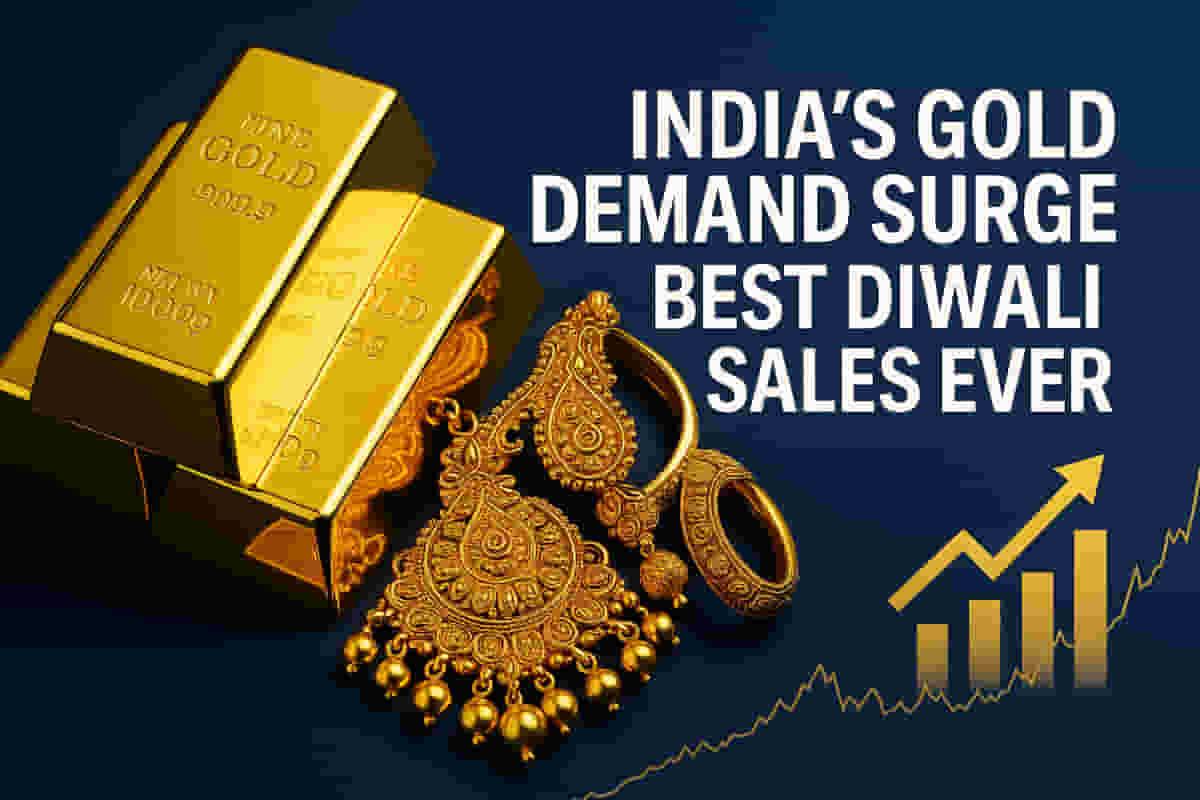India's Gold Demand Surges in October, Achieves Record Diwali Sales Despite High Prices
Commodities
|
30th October 2025, 10:07 AM

▶
Short Description :
Detailed Coverage :
India experienced a robust surge in gold demand during October, leading to record-breaking Diwali sales for jewellers, as reported by Sachin Jain, Managing Director of the World Gold Council (WGC). This strong performance occurred despite historically high gold prices. Globally, the third quarter of the year witnessed the strongest demand ever recorded, with 1,313 tonnes, primarily driven by investment demand exceeding 524 tonnes.
Sachin Jain noted that while global jewellery demand saw a decline, which was anticipated due to high prices, India's market remained strong. He recalled that the previous year's Q3 2024 demand was boosted by a significant import duty cut from 15% to 6%. Looking ahead to 2025, Jain forecasts a correction in volume (down 31%) but a steady value, with revenues projected to remain around ₹1.15 lakh crore. This is attributed to early Diwali shopping and seasonal patterns.
Investment demand in India reached 91.6 tonnes, a substantial increase valued at ₹88,970 crore, predominantly in bullion, bars, coins, and Exchange Traded Funds (ETFs). Interestingly, gold recycling declined by 7%, which Jain interprets as a sign of consumer confidence in gold as an asset. However, the exchange of old gold for new jewellery is estimated to have risen sharply by 40-45%.
The strong October festive period is expected to set a positive tone for the upcoming wedding season. Demand remained strong among high-value buyers purchasing larger quantities of jewellery. Jain emphasized the deeply entrenched consumer confidence in gold within Indian households.
Impact This strong gold demand in India signifies robust consumer confidence and significant spending power, particularly in the precious metals sector. It highlights the resilience of the Indian economy and its consumers, even amidst global economic uncertainties and high commodity prices. For businesses, it suggests strong revenue potential for jewellers and related sectors during festive periods and the wedding season. The rise in investment demand also points to gold's continued appeal as a safe-haven asset and a store of value for Indian households, potentially influencing broader investment patterns and capital flows within the country. Rating: 8/10
Difficult Terms: Investment Demand: This refers to the purchase of gold by individuals or institutions with the primary intention of holding it as an asset for capital appreciation or as a hedge against inflation and economic instability, rather than for immediate use in jewellery or industrial applications. Bullion: Gold in its pure, uncoined form, typically as bars or ingots, recognized for its intrinsic value and often traded in large quantities. ETFs (Exchange Traded Funds): Investment funds that are traded on stock exchanges, much like individual stocks. Gold ETFs hold physical gold or derivatives and allow investors to gain exposure to gold prices without directly owning physical gold. Recycling Activity: The process of melting down old or unwanted gold jewellery, coins, or other items to be repurposed into new gold products. A decline in recycling can indicate that consumers are holding onto their gold assets.